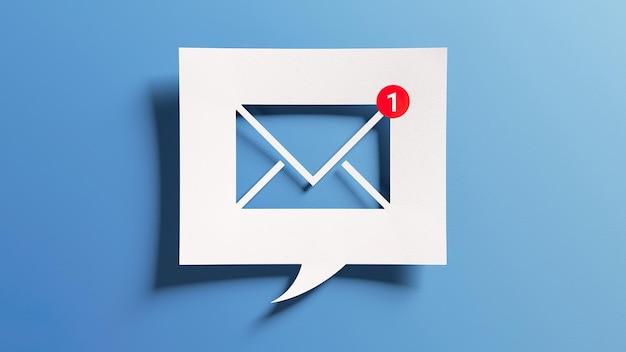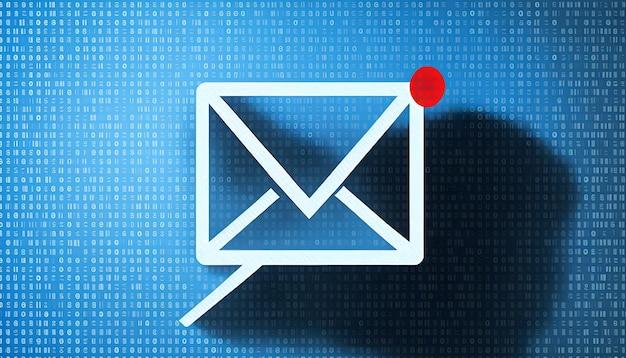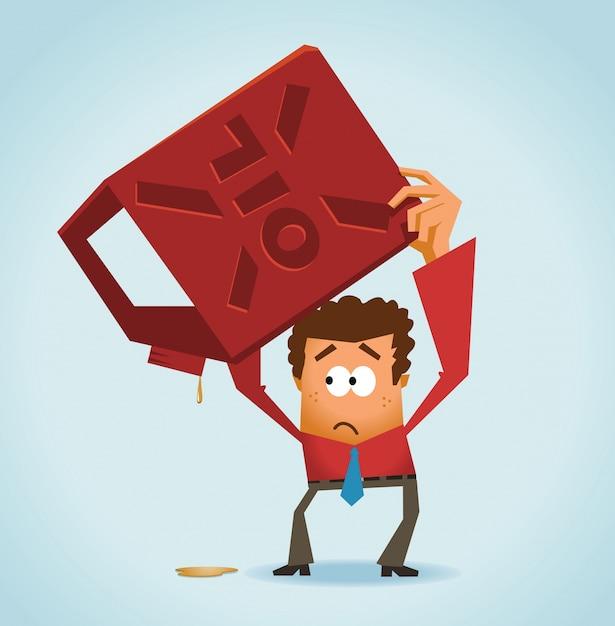Are you tired of chasing down late payments from your customers? Do you struggle to keep track of unpaid invoices? If you answered yes to either of these questions, then a dunning system may be exactly what you need.
A dunning system is a process that automates the collections process by sending out reminders and notices to customers who have outstanding balances. It helps businesses reduce churn and improve their cash flow, all while saving time and resources.
But why is it called a dunning system? The term “dunning” actually comes from a legal term that refers to the demand for payment of a debt. It’s believed to have originated in 17th century Scotland, where a man named John Dunning was known for his ability to collect debts.
Nowadays, dunning systems have become a critical component of accounting and finance operations in businesses of all sizes. They help companies keep track of their outstanding debts, prioritize collections efforts, and maintain positive relationships with customers.
In this comprehensive guide, we’ll take a deep dive into all things dunning, from the basics of the dunning process to using dunning in SAP and understanding the dunning-kruger effect. We’ll also explore the different types of dunning letters and levels, and offer tips on how to optimize your dunning process for maximum impact. Whether you’re a business owner or an accounting professional, this guide is a must-read for mastering the art of dunning.
Understanding Dunning System
Have you ever experienced failed recurring payments despite having enough funds in your bank or credit card account? The reason behind this could be that your payment method is declined due to several reasons like card expiration, incorrect payment details, insufficient funds, and other limitations. This may lead to account delinquency and revenue loss for businesses that rely on recurring payments.
To handle these types of scenarios, businesses use a dunning system that automates the process of recovering delinquent payments. In simple terms, a dunning system is a digital process that manages payment retries, payment declines, and payment correction requests.
How Does the Dunning System Work
When a payment is declined, the dunning system kicks in and sends an automated email notification to the customer, requesting them to update payment details. If the customer fails to respond, the system retries the payment in intervals until the payment is successfully processed. Moreover, if the customer’s account remains delinquent for a specified period, the dunning system may escalate the account to a collection agency.
Benefits of Dunning System
The use of a dunning system provides several benefits to businesses, such as:
- Increased revenue: The automated dunning process improves cash flow by recovering previous delinquent charges.
- Reduced payment failure: The dunning system checks payment declines and retries the payments, reducing the chances of payment failure.
- Improved customer experience: Dunning communication is automated and personalized, which facilitates customers to update their payment details easily.
Four Steps of Dunning System
The dunning system involves four steps to recover failed payments:
- Initial Notification: It notifies the customer through an automated email with relevant information, like the reason for the failed payment and steps to update the payment method.
- Reminder Notification: If the customer doesn’t respond within a specified time, a reminder email is sent.
- Grace Period Ending Notification: Before the end of the grace period, another reminder is sent to notify customers that their grace period is about to expire.
- Notification to Collection Agency: If the customer doesn’t respond even after the grace period, their account is escalated to the collection agency for further action.
In conclusion, a dunning system is essential for businesses that rely on recurring payments. It automates the entire payment recovery process, reduces revenue loss, and improves customer experience. A well-structured dunning system streamlines the payment recovery process and helps businesses maintain a healthy cash flow.
Dunning in SAP
Dunning is a process of communicating with your customers to remind them of their overdue payments. It can be time-consuming and challenging, but retreating from it can introduce significant risk for your company’s financial health. SAP facilitates businesses’ efforts in managing outstanding payments using its world-class dunning system.
Dunning Procedure in SAP
The dunning functionality in SAP is specific to a business’ accounts receivable (AR) module. To begin the dunning procedure, the first step is to configure the dunning levels. SAP allows for up to nine dunning levels to be used, with each level representing how overdue an account is.
The dunning program is executed at regular intervals to identify customer accounts that meet certain criteria that warrant one or more days of overdue payments. The program then selects customer open items following a particular sequence. Furthermore, before sending dunning notices, the system allows businesses to preview the dunning form and adjust the text as necessary.
Once the dunning program has run, Dunning Notices are generated based on the criteria set by the business. The notices include the overdue amount, penalty charges, payment terms, and more. The company also can group the dunning letters by different levels, where they can assign their dunning texts to specific levels.
SAP’s dunning system offers an efficient and organized approach to managing outstanding payments. It’s a robust process that includes configuration, preview, and selection, followed by customer communication. SAP’s dunning solution in their AR module provides businesses the tools they need to update customer accounts with finance charges, interest, late fees, and similar charges. With SAP’s dunning system, businesses can focus on their core operations, knowing that they have a reliable system in place to manage their overdue accounts.
Dunning Letter: When and How to Send One
As a business owner, you may find yourself in the uncomfortable position of having to chase down overdue payments from your clients. It’s never a pleasant experience, but it’s one that most business owners will have to deal with at some point. That’s where the dunning system comes in handy.
A dunning system is a process that businesses use to communicate with their customers about overdue payments. The purpose of dunning letters is to remind customers of their outstanding balances and encourage them to pay their bills.
When to Send a Dunning Letter
You should ideally send a dunning letter as soon as a payment becomes overdue. The longer you wait, the harder it becomes to recover the money owed to you. Typically, businesses send the first dunning letter within a week to 10 days after the payment due date has passed.
If your customer does not respond to the first letter, you should send additional letters at regular intervals. The frequency of these letters will depend on your specific business needs, but typically, businesses send a second follow-up letter after 30 days, a third letter after 60 days, and a final notice after 90 days.
What Should Be Included in a Dunning Letter
A dunning letter should be written in a friendly tone that encourages the customer to pay their bill. It should clearly state the amount owed, the due date, and how long the payment has been overdue. It should also include information on how the customer can pay their bill.
In addition to the basic information, you may want to include additional details, such as the consequences of not paying, late fees, and interest charges. You may also want to offer a payment plan or other payment options to help the customer get caught up on their payments.
In conclusion, a dunning letter is an essential tool that every business owner should have in their arsenal. Sending regular dunning letters can help you recover overdue payments from customers without damaging your business relationships. Just remember to keep the tone friendly and informative, and include all the necessary information the customer needs to pay their bill.
Dunning Accounting: Everything You Need to Know
When it comes to running a business, you need to ensure that all aspects of it are running smoothly, including the financials. Dunning accounting is a crucial component of effective financial management. In this section, we’ll explain what dunning accounting is, the benefits of using a dunning system, and how it works.
What is Dunning Accounting
Dunning accounting is simply a process of managing overdue payments from customers. It’s an essential aspect of accounting that most businesses can’t afford to overlook. In simple terms, it involves communicating with customers who are late in making payments and sending reminders to them in a bid to recover the debt owed to your business.
The Benefits of a Dunning System
Having a dunning system in place provides many benefits to businesses. One crucial benefit is that it helps to improve cash flow, as it ensures that payment delays are minimal. By sending timely reminders to customers who are late in making payments, you can effectively recover the debts owed to your business and keep your cash flow intact.
Another advantage is that it helps to maintain healthy customer relations. The dunning process involves sending gentle reminders and nudges to customers at regular intervals, which helps to avoid disputes and misunderstandings that may arise in the absence of timely communication.
How a Dunning System Works:
A dunning system involves various steps that help to streamline the process of recovering overdue payments from customers. Here’s how it works:
Step 1: Send a Reminder:
Usually, a business sends an email reminder to a customer who is yet to make a payment, indicating the amount owed and due date.
Step 2: Send a Follow-Up Reminder:
If the customer doesn’t respond, you can follow up with another reminder a few days later. This can be done through an automated system such as an email or SMS. You may choose to include information about any late payment fees that the customer may incur.
Step 3: Send a Final Notice:
If the second reminder goes unheeded, you can send a final notice to the customer. In this notice, you may inform the customer that if they don’t make payment within a certain time frame, you’ll proceed with using a debt collecting agency.
Step 4: Turn to Debt Collectors:
If all the above steps fail, you can turn to a debt collection agency to recover the debt owed to your business. Debt collectors are trained professionals who can help you navigate the legal and ethical aspects of debt collection.
Dunning accounting is a crucial component of effective financial management and is an area that every business owner needs to pay attention to. With a dunning system in place, you can streamline the process of recovering overdue payments from customers and maintain healthy customer relations. Don’t let overdue payments weigh down your business. Embrace dunning accounting today and stay on top of your finances!
The Dunning-Kruger Effect
Have you ever met someone who is so confident in their abilities, it’s almost comical? They may think they know everything there is to know about a particular subject, but in reality, they are completely clueless. This phenomenon is known as the Dunning-Kruger Effect.
What is the Dunning-Kruger Effect
The Dunning-Kruger Effect is a cognitive bias that causes people to overestimate their abilities in a particular area. This can occur when someone lacks knowledge about a subject but doesn’t realize it. Their confidence in their abilities outweighs their actual skill level, resulting in a false sense of superiority.
Conversely, those who are truly skilled in a subject tend to underestimate their abilities because they are aware of all the nuances and complexities involved. They are more likely to recognize the gaps in their knowledge and recognize that there is still much to learn.
Real-World Examples of the Dunning-Kruger Effect
The Dunning-Kruger Effect can be observed in many areas of life. For example, have you ever watched a singing competition where contestants who are clearly talented are rejected while those who are completely tone-deaf insist on their superiority?
Another example is in the workplace, where someone with little experience may believe themselves to be an expert and make decisions that ultimately harm the company. In politics, we see the Dunning-Kruger Effect when politicians make uninformed decisions based on faulty knowledge but refuse to listen to experts in the field.
How to Avoid the Dunning-Kruger Effect
The first step in avoiding the Dunning-Kruger Effect is to recognize that it exists. If you find yourself feeling overly confident in your abilities in a particular area, take a step back and assess your knowledge objectively. Be open to learning new things and consider the opinions of experts in the field.
In summary, the Dunning-Kruger Effect is a phenomenon that causes people to overestimate their abilities in a particular area. By recognizing the effect and being open to new knowledge, we can avoid falling into the trap of false confidence and continue to grow and improve.
Dunning Process Meaning
If you’re a business owner, you must understand the term “dunning process.” It’s a vital aspect of managing your company’s finances and avoiding failed payments. In this section, we’ll discuss what the dunning process means and how it works in practice.
Definition of the Dunning Process
The dunning process refers to a series of steps a business takes to collect payment from customers who have failed to complete their initial payments. It’s standard practice used by companies to avoid losses caused by non-payment or late payment of bills. The primary objective of this process is to retrieve failed payments and maintain customer relationships.
How the Dunning Process Works
At the core of the dunning process is the dunning letter, a formal communication outlining the payment failure and any outstanding dues. When a payment fails, the business sends a dunning letter to the customer, reminding them of the outstanding dues and asking them to complete the payment. The payment reminders continue at various intervals and levels of severity, with the dunning process becoming more aggressive at each stage.
Level 1: Reminder
At the first stage of the dunning process, the company sends a friendly reminder to the customer via email or SMS about the failed payment.
Level 2: Follow-up
If the initial reminder fails to receive a response, the company sends another follow-up email or message with a more urgent tone.
Level 3: Suspension of Service
At this stage, the company may suspend services for non-payment. The customer receives a communication that their account has been temporarily suspended, and they need to complete the payment to restore access.
Level 4: Final Notice
If all previous attempts fail, the final dunning letter is sent, giving the customer one last chance to complete the payment before legal action.
The dunning process is a crucial aspect of financial management that companies must use to minimize losses and maintain healthy customer relationships. Understanding the dunning process meaning and applying it efficiently can help your business improve its cash flow, reduce payment delays, and improve the overall financial health of your business.
What is a Dunning System
If you’re in the business of collecting payments from customers, you may have encountered the term “dunning system” before. In simple terms, a dunning system is a process through which you can communicate with customers who are behind on their payments.
How Does a Dunning System Work
A dunning system typically involves sending a series of automated emails to customers who are overdue on their payments. These emails can be personalized with the customer’s name and specific information about their account, such as the amount owed and the due date.
The first email in the series may be a friendly reminder that the payment is due soon, while subsequent emails may become increasingly urgent in tone. Some dunning systems may also offer incentives for customers to make their payments, such as discounts or waived fees.
Why Do You Need a Dunning System
A dunning system can be a vital tool for any business that relies on regular payments from customers. Without a system in place to remind customers of their overdue payments, it’s easy for payments to slip through the cracks and go unpaid.
Furthermore, consistently late payments can put a strain on your business’s cash flow, making it difficult to pay your own bills or invest in growth opportunities. By implementing a dunning system, you can help ensure that your customers pay on time and keep your business running smoothly.
In summary, a dunning system is an automated process that helps businesses communicate with customers who are behind on their payments. By sending a series of personalized emails, businesses can remind customers of their overdue payments and provide incentives for them to pay on time. Implementing a dunning system can help businesses maintain a healthy cash flow and avoid the negative consequences of consistently late payments.
Why is it called dunning
Dunning is often considered a strange name for a collection system, but the origins of this name are quite interesting. The term “dunning” actually comes from the name of a man named John Dunning, who was an 18th-century English lawyer and politician.
John Dunning and the Origins of Dunning System
John Dunning was known for his work in defending people against unfair taxes. He was a vocal advocate for reforming the British tax system, which was notoriously stringent during that era. His efforts to fight against excessive taxation eventually earned him a reputation as a defender of the common people.
After his death, the term “dunning” became associated with the process of collecting overdue debts and payments. This connection was likely made due to John Dunning’s reputation as a defender of people who were struggling financially.
The Evolution of Dunning System
Over time, the term “dunning” evolved to include a more formal system for collecting debts. Dunning letters, which are now a common part of the debt collection process, were originally based on John Dunning’s letters to people who owed taxes. These letters were intended to be firm but fair reminders to pay what was owed.
Today, the dunning system is an essential part of many businesses, ensuring that overdue payments are collected in a timely manner. Despite its somewhat unusual name, the dunning system has proven to be an effective way of managing debts and ensuring that companies receive the payments they are owed.
So why is it called dunning? Well, it all started with an advocate for tax reform in 18th-century England. Over time, the term “dunning” evolved to refer to a system for collecting overdue payments and has become an essential part of the modern business landscape. Now that you know the origins of this system, you can appreciate how it has evolved over time and how it continues to help companies manage their debt in a fair and effective way.
What Does Dunning Level Mean
If you’re handling a subscription-based business or managing recurring payments, it’s essential to have a dunning system in place. From the perspective of the subscription business owner, dunning is an automated way of notifying customers who are behind on their payments, providing them with a chance to reactivate or update their billing information.
Definition of Dunning Level
Simply put, dunning levels refer to the stages of payment reminders sent to customers who are delinquent in their payments. Each time a customer fails to make a payment, they enter a different level, and the dunning system sends reminders accordingly. Different businesses have different levels depending on how long it takes to consider a customer “past due.”
For example, some businesses consider an account past due after one day, while others may consider it past due after three, seven, or more days. For each level, the dunning system sends out an automated email reminder. Depending on the level, the reminder may be more urgent than the previous one, increasing in urgency as the customer moves up the dunning levels.
Different Levels of Dunning
There’s no definitive set of dunning levels as it depends entirely on the business’ strategy. However, most typically utilize a 3-4 level dunning system. Here are some common examples:
Level One: Payment Reminder
At this level, an email is sent to remind the customer that payment is due. This message is typically friendly in tone, asking the customer to check their billing information and correct any issues. It usually sent to the customer immediately after payment becomes due.
Level Two: Gentle Reminder
At this stage, the message is more urgent, reminding the customer that they have not submitted payment. This stage is typically two to three days after level one. Some businesses may also add a small late fee or notify the customer that services may be suspended if payment is not made.
Level Three: Final Notice
Here, the urgency moves up a notch, and customers are given a final notice that their account is past due, and it may now be subject to suspension. This stage is usually five to seven days after level two.
Level Four: Suspension
At this level, the dunning system suspends the customer’s account because they haven’t made payment for an extended period. The message is often apologetic and encourages the customer to pay the outstanding balance and restore their account.
In conclusion, dunning levels are a crucial part of any subscription-based business. It’s not only about reminding customers to make payments but about adopting a personalized approach that will keep them engaged. Customers who have payment issues may need your help, and effective dunning systems can help keep them loyal, leading to a stronger customer base and higher retention rates.



